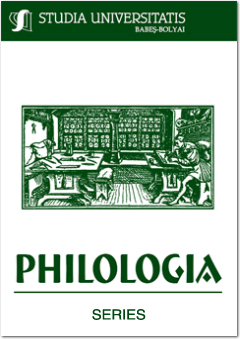STRUCTURAL REVERSAL BETWEEN WRITTEN AND SPOKEN LANGUAGES IN JAPANESE
STRUCTURAL REVERSAL BETWEEN WRITTEN AND SPOKEN LANGUAGES IN JAPANESE
Author(s): Toshiyuki SadanobuSubject(s): Language and Literature Studies
Published by: Studia Universitatis Babes-Bolyai
Keywords: structural reversal; spoken/written languages; Japanese.
Summary/Abstract: Structural reversal between written and spoken languages in Japanese. Written and spoken languages have traditionally been thought as distinguished from each other simply by the medium used. But at the same time it has been also pointed out that this distinction sometimes overlaps with stylistic distinction (e.g. Lyons 1981). More recently the innovative idea that they should be distinguished synthetically using various viewpoints has become widespread (e.g. Chafe 1982; Tannen 1980, 1982). According to this idea, written and spoken languages are best delineated using various interrelated parameters including structure, strategy, and content besides medium as a matter of degree on a continuum. Prototypical written language conveys general knowledge to distant receivers by a complex and dense text structure, whereas prototypical spoken language, consisting of a simple and fragmented structure of sound, fits well with conveying personal experiences in on-line multi-modal interaction. Quite contrary to this common idea (structural aspect, inter alia), Modern Japanese spoken language often disprefers simpler structures and prefers more complex structures. We shall observe this previously unrevealed phenomenon (henceforth 'structural reversal') by using constructed and real examples in Section 2, and then point out its formal/semantic/pragmatic characteristics in Section 3. Based on this characterization, we shall discuss the theoretical impact that structural reversal has on research regarding "written and spoken languages," and "grammar and communication" in Section 4.
Journal: Studia Universitatis Babes-Bolyai - Philologia
- Issue Year: 58/2013
- Issue No: 1
- Page Range: 21-33
- Page Count: 13
- Language: English

